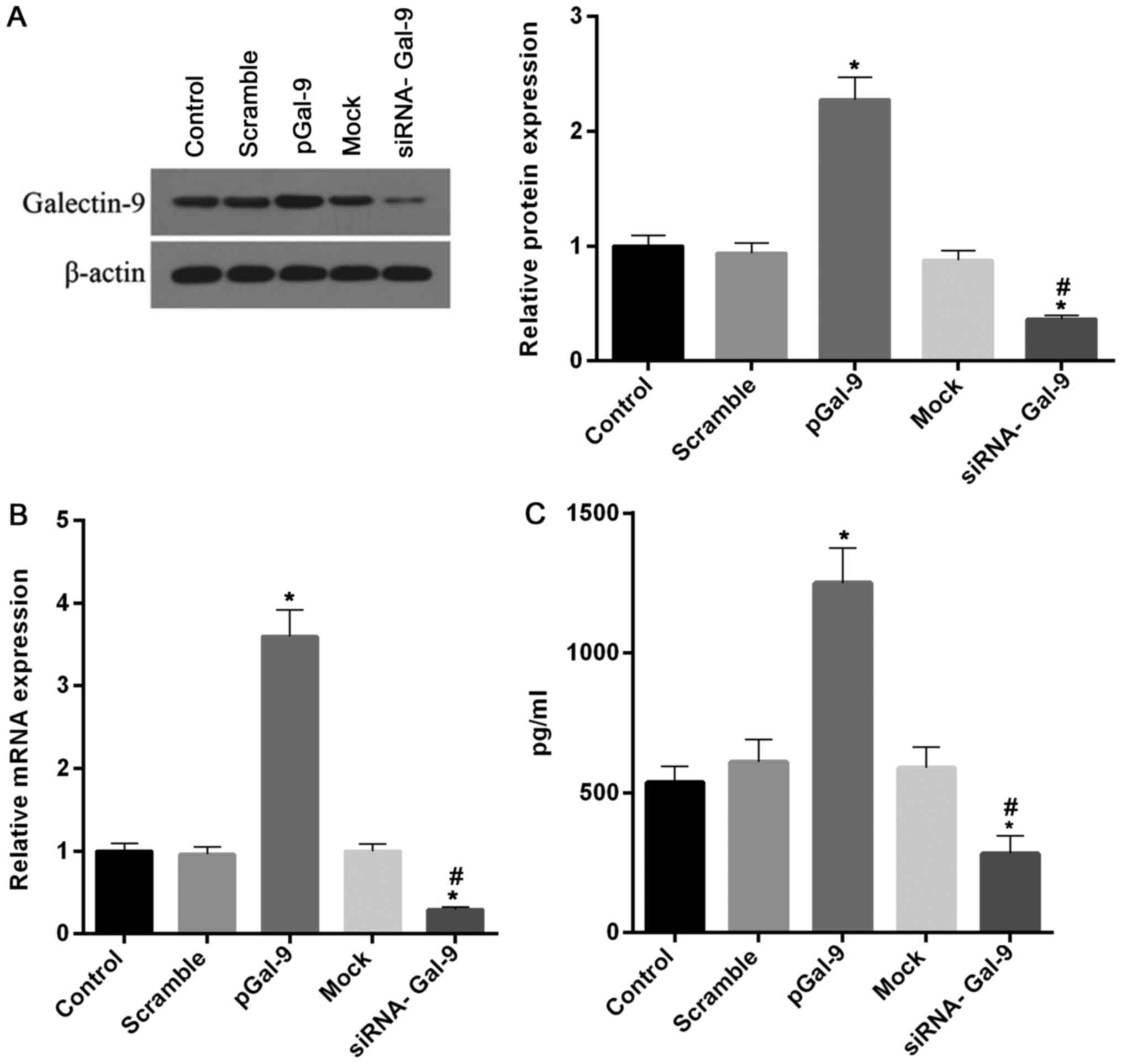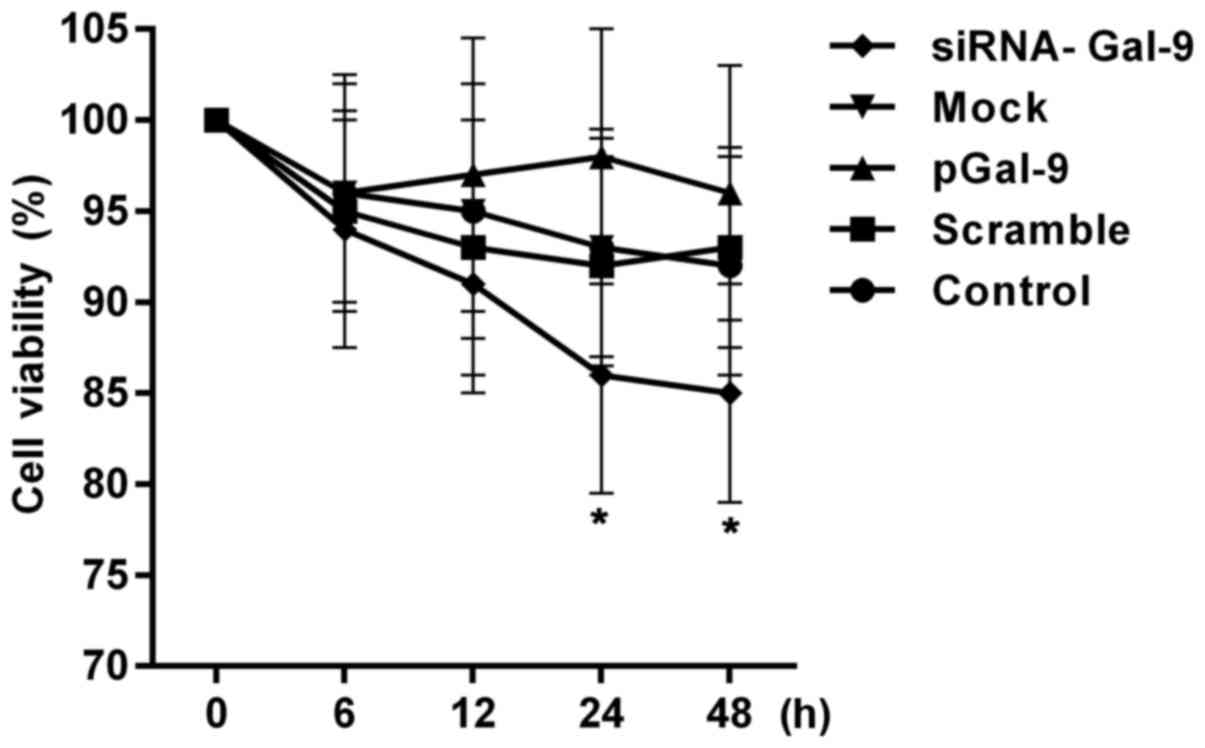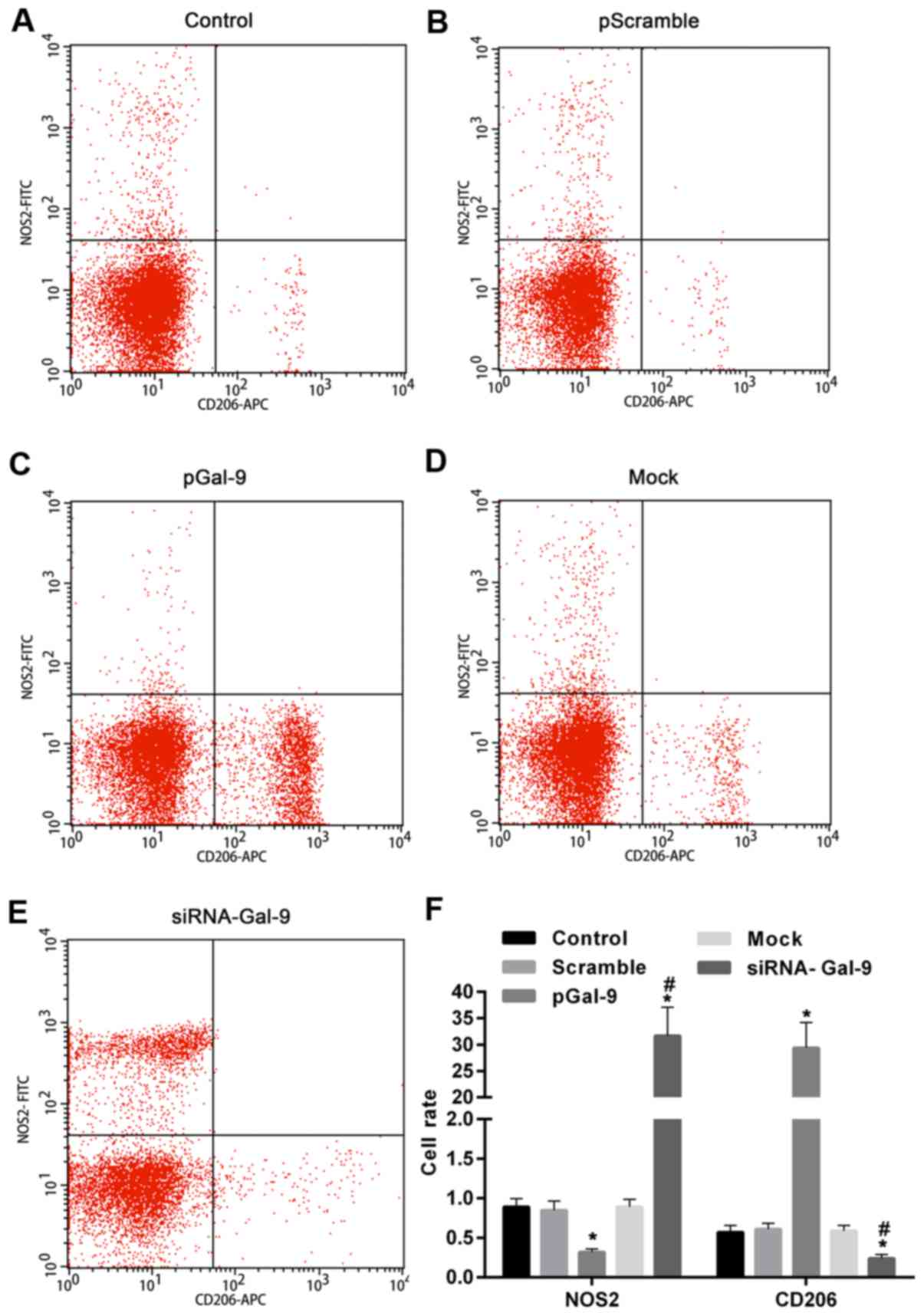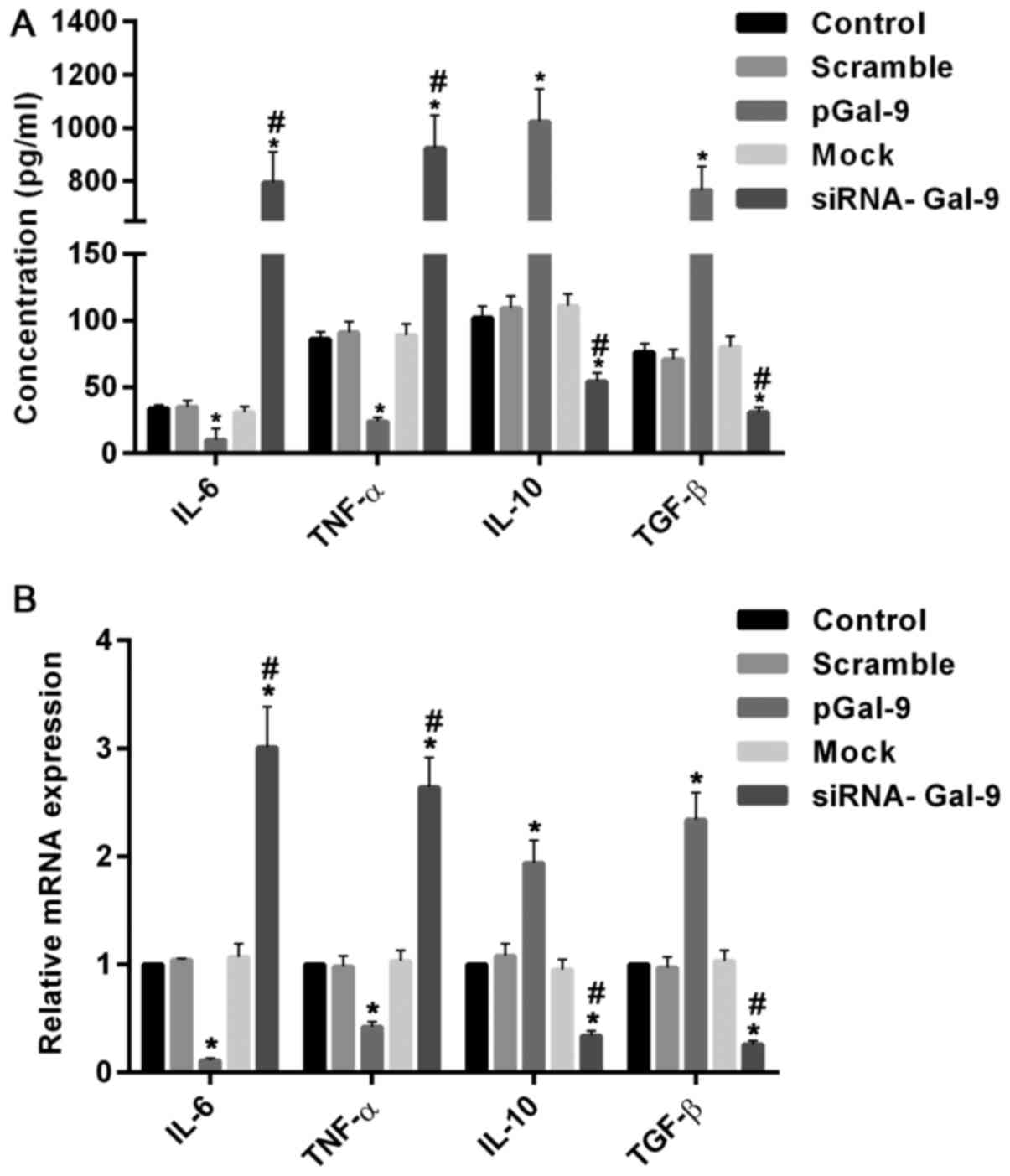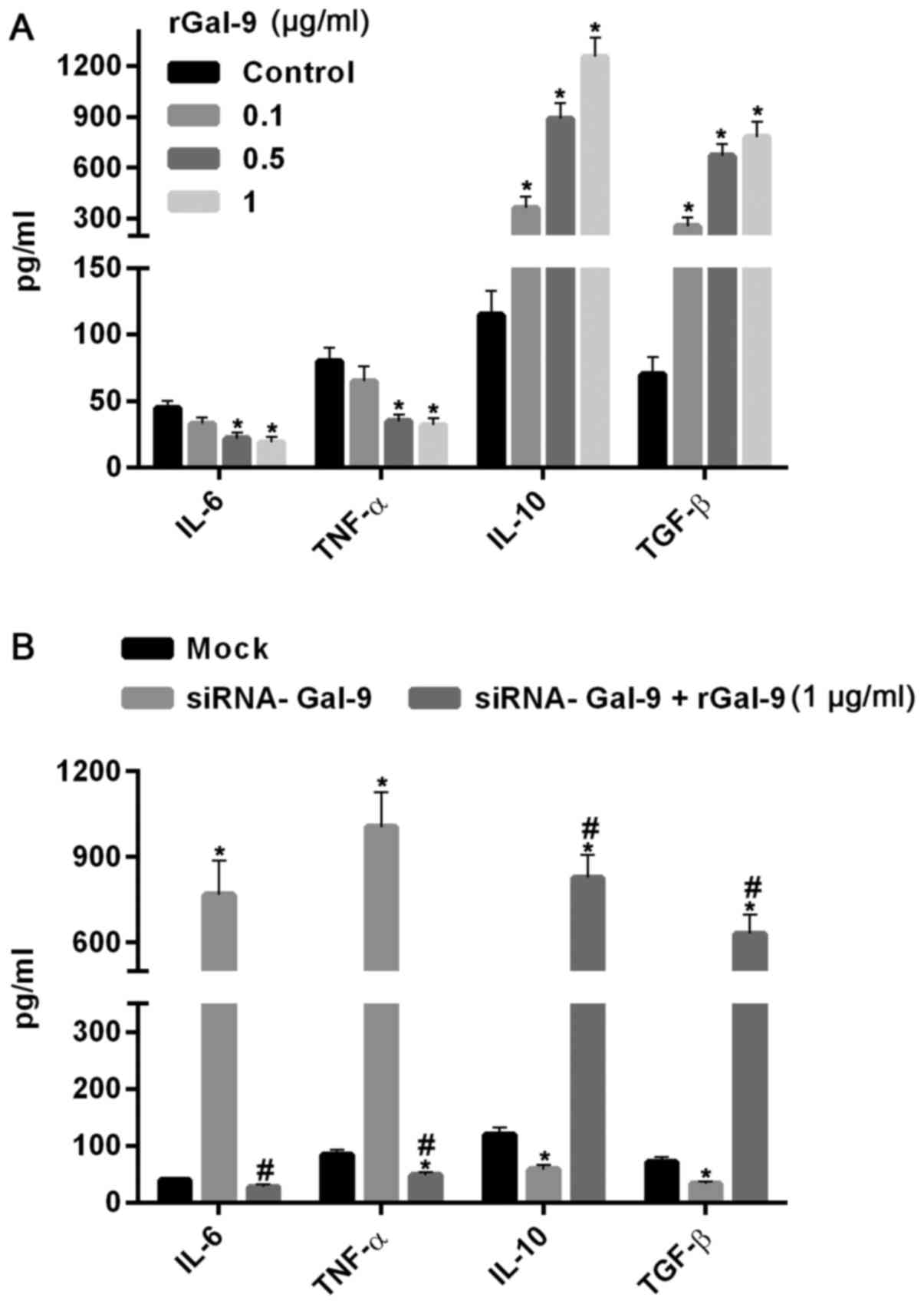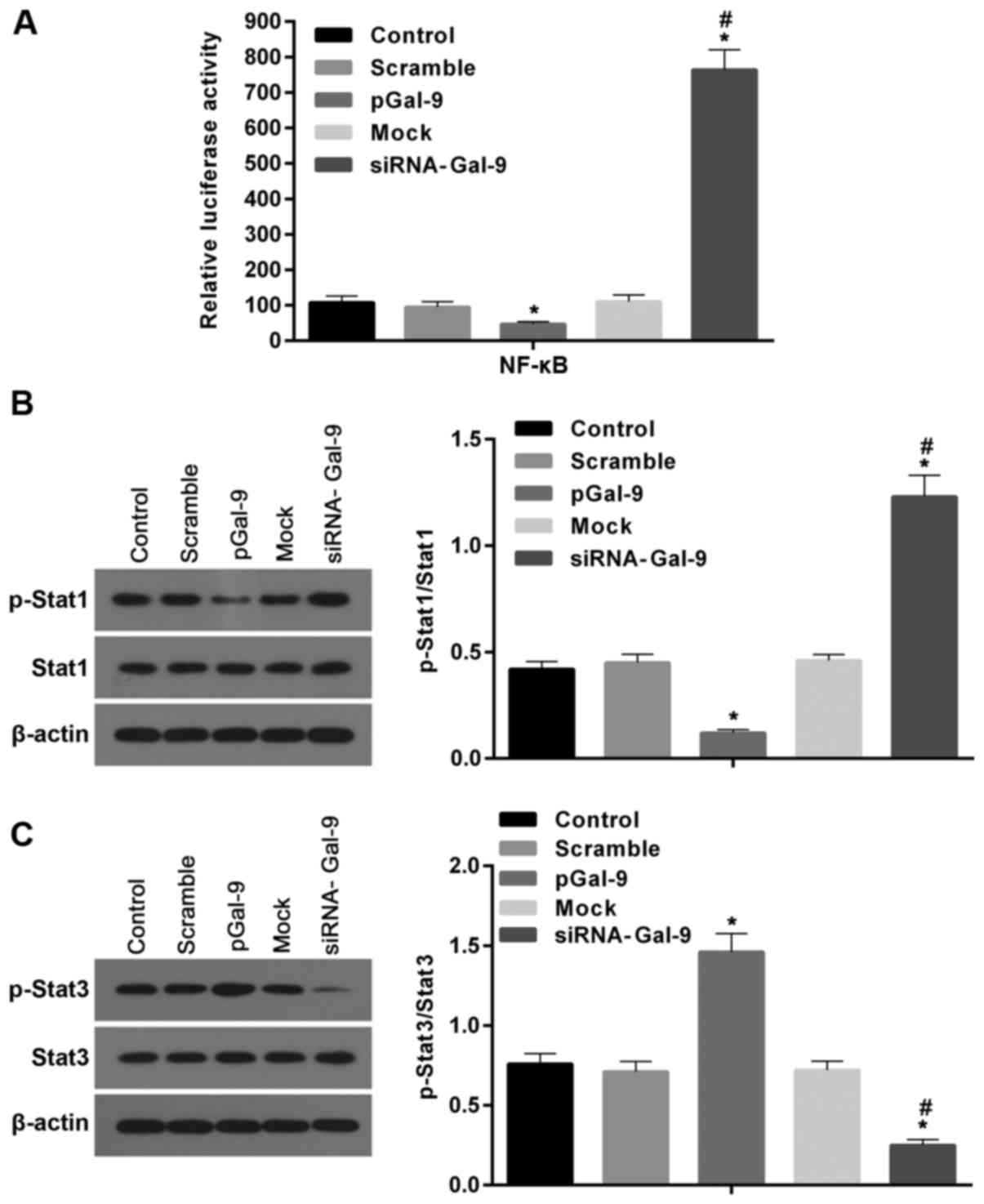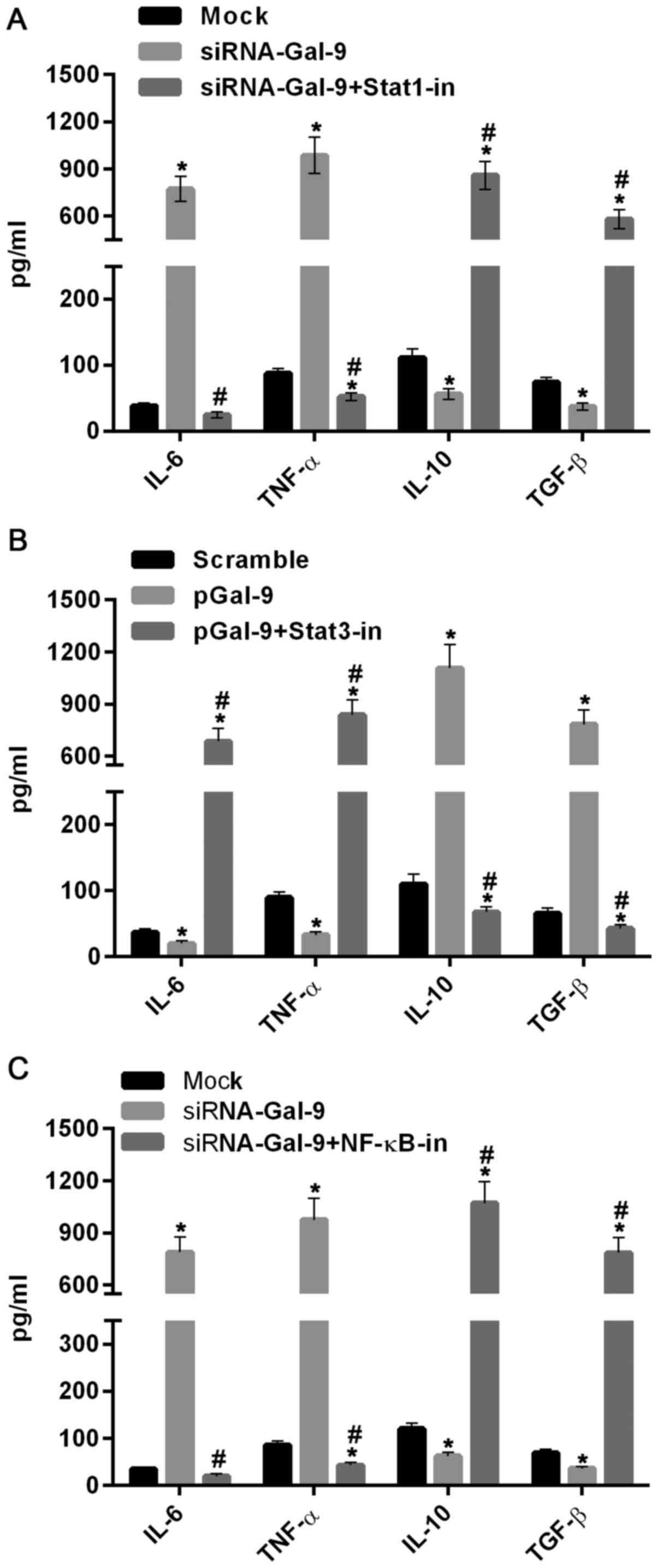|
1
|
Martinez FO, Sica A, Mantovani A and
Locati M: Macrophage activation and polarization. Front Biosci.
13:453–461. 2008. View
Article : Google Scholar : PubMed/NCBI
|
|
2
|
Mantovani A, Sozzani S, Locati M, Allavena
P and Sica A: Macrophage polarization: Tumor-associated macrophages
as a paradigm for polarized M2 mononuclear phagocytes. Trends
Immunol. 23:549–555. 2002. View Article : Google Scholar : PubMed/NCBI
|
|
3
|
Wang C, Liu X, Liu Y, Zhang Q, Yao Z,
Huang B, Zhang P, Li N and Cao X: Zinc finger protein 64 promotes
Toll-like receptor-triggered proinflammatory and type I interferon
production in macrophages by enhancing p65 subunit activation. J
Biol Chem. 288:24600–24608. 2013. View Article : Google Scholar : PubMed/NCBI
|
|
4
|
Mantovani A, Sica A and Locati M: New
vistas on macrophage differentiation and activation. Eur J Immunol.
37:14–16. 2007. View Article : Google Scholar : PubMed/NCBI
|
|
5
|
Macatonia SE, Hsieh CS, Murphy KM and
O'Garra A: Dendritic cells and macrophages are required for Th1
development of CD4+ T cells from alpha beta TCR transgenic mice:
IL-12 substitution for macrophages to stimulate IFN-gamma
production is IFN-gamma-dependent. Int Immunol. 5:1119–1128. 1993.
View Article : Google Scholar : PubMed/NCBI
|
|
6
|
Puddu P, Fantuzzi L, Borghi P, Varano B,
Rainaldi G, Guillemard E, Malorni W, Nicaise P, Wolf SF, Belardelli
F and Gessani S: IL-12 induces IFN-gamma expression and secretion
in mouse peritoneal macrophages. J Immunol. 159:3490–3497.
1997.PubMed/NCBI
|
|
7
|
Bashir S, Sharma Y, Elahi A and Khan F:
Macrophage polarization: The link between inflammation and related
diseases. Inflamm Res. 65:1–11. 2016. View Article : Google Scholar : PubMed/NCBI
|
|
8
|
Tymoszuk P, Charoentong P, Hackl H, Spilka
R, Müller-Holzner E, Trajanoski Z, Obrist P, Revillion F, Peyrat
JP, Fiegl H and Doppler W: High STAT1 mRNA levels but not its
tyrosine phosphorylation are associated with macrophage
infiltration and bad prognosis in breast cancer. BMC Cancer.
14:2572014. View Article : Google Scholar : PubMed/NCBI
|
|
9
|
Satoh T, Takeuchi O, Vandenbon A, Yasuda
K, Tanaka Y, Kumagai Y, Miyake T, Matsushita K, Okazaki T, Saitoh
T, et al: The Jmjd3-Irf4 axis regulates M2 macrophage polarization
and host responses against helminth infection. Nat Immunol.
11:936–944. 2010. View
Article : Google Scholar : PubMed/NCBI
|
|
10
|
Tamura M, Watanabe T, Igarashi T, Takeuchi
T, Kasai K and Arata Y: Crosslinking of Cys-mutated human
galectin-1 to the model glycoprotein ligands asialofetuin and
laminin by using a photoactivatable bifunctional reagent. Biol
Pharm Bull. 37:877–882. 2014. View Article : Google Scholar : PubMed/NCBI
|
|
11
|
Vicuña L, Pardo E, Curkovic C, Döger R,
Oyanadel C, Metz C, Massardo L, González A and Soza A: Galectin-8
binds to LFA-1, blocks its interaction with ICAM-1 and is
counteracted by anti-Gal-8 autoantibodies isolated from lupus
patients. Biol Res. 46:275–280. 2013. View Article : Google Scholar : PubMed/NCBI
|
|
12
|
Wijesundera KK, Izawa T, Tennakoon AH,
Murakami H, Golbar HM, Katou-Ichikawa C, Tanaka M, Kuwamura M and
Yamate J: M1- and M2-macrophage polarization in rat liver cirrhosis
induced by thioacetamide (TAA), focusing on Iba1 and galectin-3.
Exp Mol Pathol. 96:382–392. 2014. View Article : Google Scholar : PubMed/NCBI
|
|
13
|
Markovic B Simovic, Nikolic A, Gazdic M,
Nurkovic J, Djordjevic I, Arsenijevic N, Stojkovic M, Lukic ML and
Volarevic V: Pharmacological inhibition of Gal-3 in mesenchymal
stem cells enhances their capacity to promote alternative
activation of macrophages in dextran sulphate sodium-induced
colitis. Stem Cells Int. 2016:26407462016.PubMed/NCBI
|
|
14
|
Elahi S, Niki T, Hirashima M and Horton H:
Galectin-9 binding to Tim-3 renders activated human CD4+ T cells
less susceptible to HIV-1 infection. Blood. 119:4192–4204. 2012.
View Article : Google Scholar : PubMed/NCBI
|
|
15
|
Wang F, He W, Yuan J, Wu K, Zhou H, Zhang
W and Chen ZK: Activation of Tim-3-Galectin-9 pathway improves
survival of fully allogeneic skin grafts. Transpl Immunol.
19:12–19. 2008. View Article : Google Scholar : PubMed/NCBI
|
|
16
|
Gooden MJ, Wiersma VR, Samplonius DF,
Gerssen J, van Ginkel RJ, Nijman HW, Hirashima M, Niki T, Eggleton
P, Helfrich W and Bremer E: Galectin-9 activates and expands human
T-Helper 1 cells. PLoS One. 8:e656162013. View Article : Google Scholar : PubMed/NCBI
|
|
17
|
Chabtini L, Mfarrej B, Mounayar M, Zhu B,
Batal I, Dakle PJ, Smith BD, Boenisch O, Najafian N, Akiba H, et
al: TIM-3 regulates innate immune cells to induce fetomaternal
tolerance. J Immunol. 190:88–96. 2013. View Article : Google Scholar : PubMed/NCBI
|
|
18
|
Zhao Z, Jiang X, Kang C, Xiao Y, Hou C, Yu
J, Wang R, Xiao H, Zhou T, Wen Z, et al: Blockade of the T cell
immunoglobulin and mucin domain protein 3 pathway exacerbates
sepsis-induced immune deviation and immunosuppression. Clin Exp
Immunol. 178:279–291. 2014. View Article : Google Scholar : PubMed/NCBI
|
|
19
|
Li X, Chen Y, Liu X, Zhang J, He X, Teng G
and Yu D: Tim3/Gal9 interactions between T cells and monocytes
result in an immunosuppressive feedback loop that inhibits Th1
responses in osteosarcoma patients. Int Immunopharmacol.
44:153–159. 2017. View Article : Google Scholar : PubMed/NCBI
|
|
20
|
Wada J, Ota K, Kumar A, Wallner EI and
Kanwar YS: Developmental regulation, expression, and apoptotic
potential of galectin-9, a beta-galactoside binding lectin. J Clin
Invest. 99:2452–2461. 1997. View Article : Google Scholar : PubMed/NCBI
|
|
21
|
Jiang X, Yu J, Shi Q, Xiao Y, Wang W, Chen
G, Zhao Z, Wang R, Xiao H, Hou C, et al: Tim-3 promotes intestinal
homeostasis in DSS colitis by inhibiting M1 polarization of
macrophages. Clin Immunol. 160:328–335. 2015. View Article : Google Scholar : PubMed/NCBI
|
|
22
|
Mock BA, Krall MM, Byrd LG, Chin H, Barton
CH, Charles I, Liew FY and Blackwell J: The inducible form of
nitric oxide synthase (NOS2) isolated from murine macrophages maps
near the nude mutation on mouse chromosome 11. Eur J Immunogenet.
21:231–238. 1994. View Article : Google Scholar : PubMed/NCBI
|
|
23
|
Liu HF, Zhang HJ, Hu QX, Liu XY, Wang ZQ,
Fan JY, Zhan M and Chen FL: Altered polarization, morphology, and
impaired innate immunity germane to resident peritoneal macrophages
in mice with long-term type 2 diabetes. J Biomed Biotechnol.
2012:8670232012. View Article : Google Scholar : PubMed/NCBI
|
|
24
|
Kienast K, Knorst M, Müller-Quernheim J
and Ferlinz R: Modulation of IL-1beta, IL-6, IL-8, TNF-alpha, and
TGF-beta secretions by alveolar macrophages under NO 2 exposure.
Lung. 174:57–67. 1996.PubMed/NCBI
|
|
25
|
Gu Y, Hu X, Liu C, Qv X and Xu C:
Interleukin (IL)-17 promotes macrophages to produce IL-8, IL-6 and
tumour necrosis factor-alpha in aplastic anaemia. Br J Haematol.
142:109–114. 2008. View Article : Google Scholar : PubMed/NCBI
|
|
26
|
An SJ, Pae HO, Oh GS, Choi BM, Jeong S,
Jang SI, Oh H, Kwon TO, Song CE and Chung HT: Inhibition of
TNF-alpha, IL-1beta and IL-6 productions and NF-kappa B activation
in lipopolysaccharide-activated RAW 264.7 macrophages by
catalposide, an iridoid glycoside isolated from Catalpa ovata G.
Don (Bignoniaceae). Int Immunopharmacol. 2:1173–1181. 2002.
View Article : Google Scholar : PubMed/NCBI
|
|
27
|
Zhang Y, Cheng S, Zhang M, Zhen L, Pang D,
Zhang Q and Li Z: High-infiltration of tumor-associated macrophages
predicts unfavorable clinical outcome for node-negative breast
cancer. PLoS One. 8:e761472013. View Article : Google Scholar : PubMed/NCBI
|
|
28
|
Bastos KR, Alvarez JM, Marinho CR, Rizzo
LV and Lima MR: Macrophages from IL-12p40-deficient mice have a
bias toward the M2 activation profile. J Leukoc Biol. 71:271–278.
2002.PubMed/NCBI
|
|
29
|
Jung SH, Hwang JH, Kim SE, Kim YK, Park HC
and Lee HT: Human galectin-9 on the porcine cells affects the
cytotoxic activity of M1-differentiated THP-1 cells through
inducing a shift in M2-differentiated THP-1 cells.
Xenotransplantation. 24:2017. View Article : Google Scholar
|
|
30
|
Cao S, Zhang X, Edwards JP and Mosser DM:
NF-kappaB1 (p50) homodimers differentially regulate pro- and
anti-inflammatory cytokines in macrophages. J Biol Chem.
281:26041–26050. 2006. View Article : Google Scholar : PubMed/NCBI
|
|
31
|
Ohkubo N, Suzuki Y, Aoto M, Yamanouchi J,
Hirakawa S, Yasukawa M and Mitsuda N: Accelerated destruction of
erythrocytes in Tie2 promoter-driven STAT3 conditional knockout
mice. Life Sci. 93:380–387. 2013. View Article : Google Scholar : PubMed/NCBI
|
|
32
|
Cramer LA, Nelson SL and Klemsz MJ:
Synergistic induction of the Tap-1 gene by IFN-gamma and
lipopolysaccharide in macrophages is regulated by STAT1. J Immunol.
165:3190–3197. 2000. View Article : Google Scholar : PubMed/NCBI
|
|
33
|
Choi JW, Kwon MJ, Kim IH, Kim YM, Lee MK
and Nam TJ: Pyropia yezoensis glycoprotein promotes the M1 to M2
macrophage phenotypic switch via the STAT3 and STAT6 transcription
factors. Int J Mol Med. 38:666–674. 2016. View Article : Google Scholar : PubMed/NCBI
|
|
34
|
Tyagi A, Singh RP, Ramasamy K, Raina K,
Redente EF, Dwyer-Nield LD, Radcliffe RA, Malkinson AM and Agarwal
R: Growth inhibition and regression of lung tumors by silibinin:
Modulation of angiogenesis by macrophage-associated cytokines and
nuclear factor-kappaB and signal transducers and activators of
transcription 3. Cancer Prev Res (Phila). 2:74–83. 2009. View Article : Google Scholar : PubMed/NCBI
|















